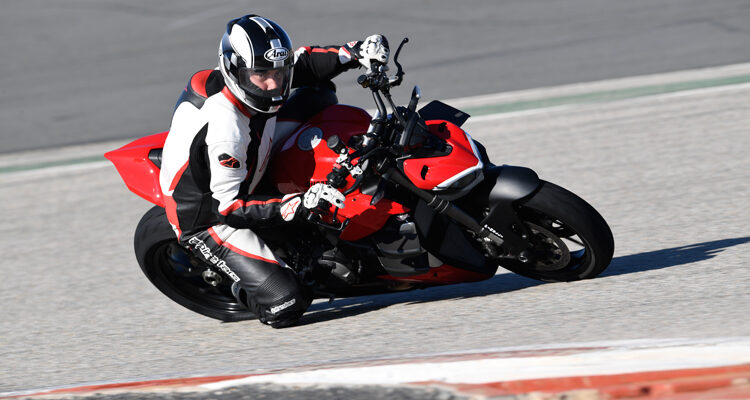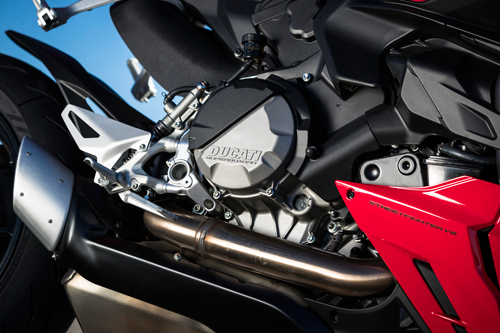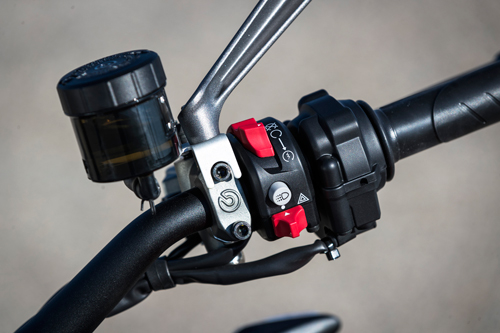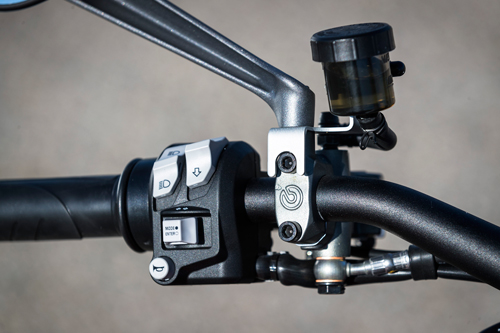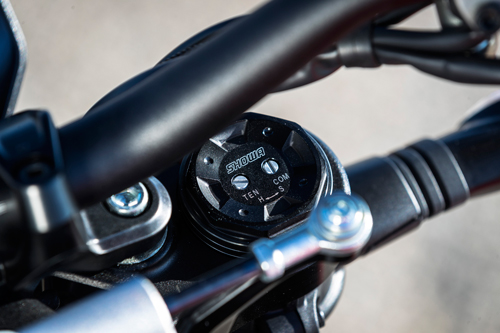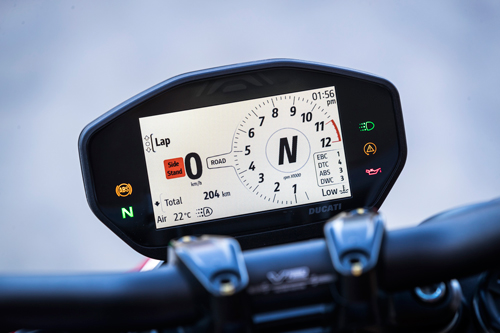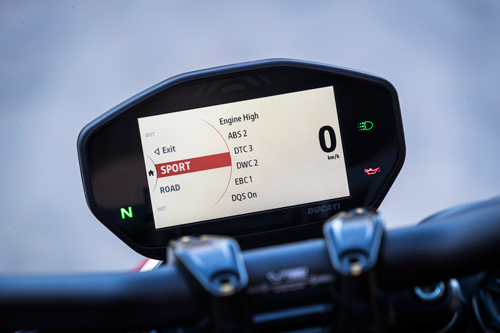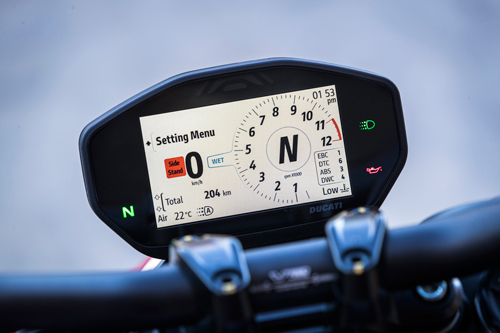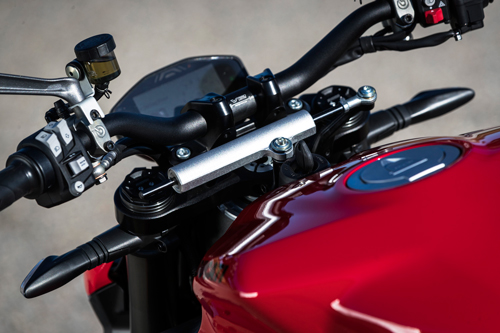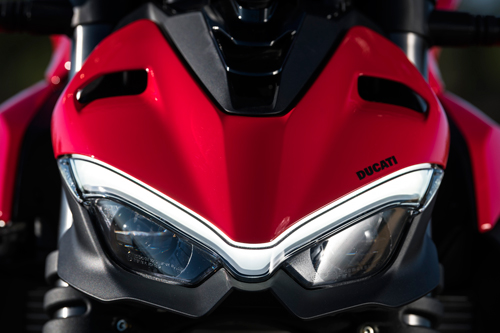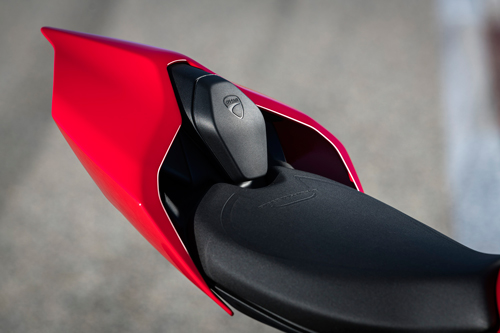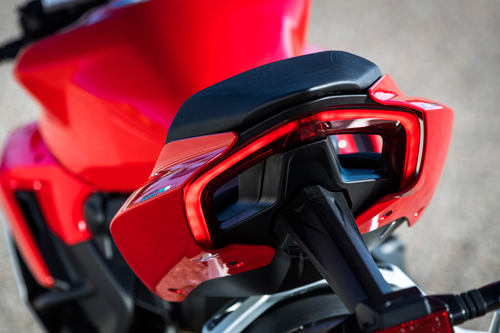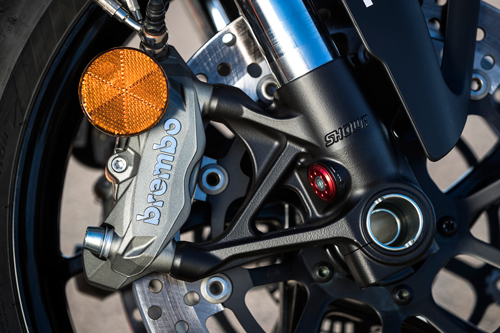I initially though that a morning spent thrashing the 2022 Ducati Streetfighter V2 around Circuito Monteblanco, a racetrack located 60 kilometres west of Seville, Spain, would have been the crescendo in a day of sport riding, but then we hit the roads to the north of racetrack. Having been told by out hosts that the roads would be twisty and traffic would be light, it was an unexpected surprise to find a serpentine strip of asphalt so bendy that there was no room to take a breather between curves — almost dizzying, in fact — and aside from a handful of other vehicles we passed along the way, it was almost completely devoid of traffic.
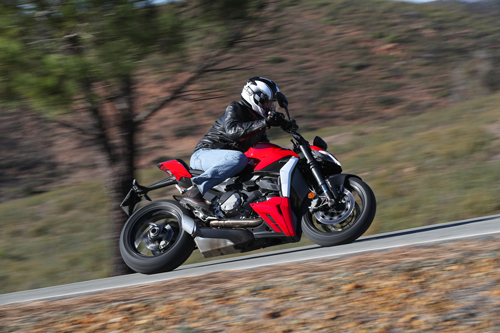
There are two schools of design when it comes to the styling of naked bikes: Old-school retro and new-age bold. The Streetfighter V2 is obviously the latter. While I do have a soft spot for retro-styled naked bikes, the Streetfighter is well proportioned, with its tail-up stance and insect-like headlight nacelle giving the machine an appealing, dare I say sexy silhouette. For the track portion of the test ride, the folks at Ducati had installed optional, downforce-inducing winglets. Whether you find them attractive or not (I find they detract from the bike’s narrow profile), they are said to increase downforce at speed, which is beneficial on the track.
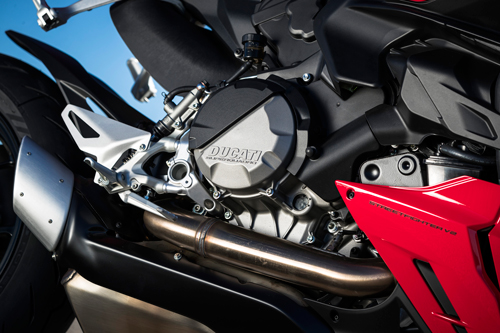
At the heart of the Streetfighter V2 is the same 955 cc liquid-cooled 90-degree V-twin as in the fully-faired Panigale V2 supersport machine. It’s tuned a touch differently, claiming 153 horsepower and 74.8 lb-ft of torque, versus 155 hp and 76.7 lb-ft for the Panigale, but that difference is not noticeable from the seat, and in fact, the Streetfighter feels snappier off the line due to a slightly shorter final drive ratio (two teeth were added to the rear sprocket). Of course, those numbers pale in comparison with the Streetfigher V4, which claims 208 horsepower and 90.4 lb-ft of torque. However, its more modest output (if you can say that for a 150-hp motorcycle) is what makes the Streetfighter V2 a more desirable motorcycle.
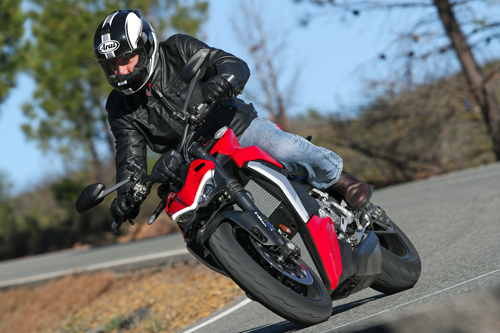
The Streetfighter’s chassis is identical to the Panigale V2, as is chassis geometry. The only change is a 16-mm longer swingarm, which lengthens the Streetfighter’s wheelbase to 1,465 mm, a change that improves stability. If you’re unfamiliar with the latest Ducati sport bikes, the chassis consists of a diecast aluminum monocoque frame bolted to the front of the engine, a cast aluminum subrame bolted to the rear, and a massive, single-sided swingarm that pivots in the engine case. This makes the engine, which is a rigid chunk of aluminum, an integral part of the frame, and is what makes the Streetfighter a taut, highly flickable tool designed to attack twisties. Showa provides the inverted fork, Sachs the shock absorber, and the suspension at both ends is fully adjustable.
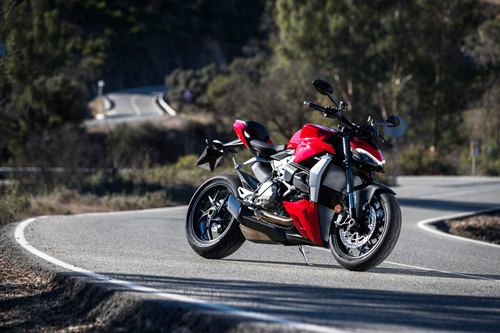
The Streetfighter isn’t a laid-back cruiser, and its mostly upright riding position puts you in a slightly forward lean to reach the handlebar, placing you in attack mode before you even fire up the engine. Grabbing the high, wide handlebar is like grabbing a bull by the horns — or at least I assume so, having never really grabbed a bull by the horns. Push the start button and the engine fires up in a familiar syncopated V-twin drone, which is unfortunately a bit subdued due to the bike’s Euro 5 compliance. It’s nonetheless a sound that entices you to take said bullhorns and manhandle the bike through turns, which the Streetfighter does remarkably well.
Track time
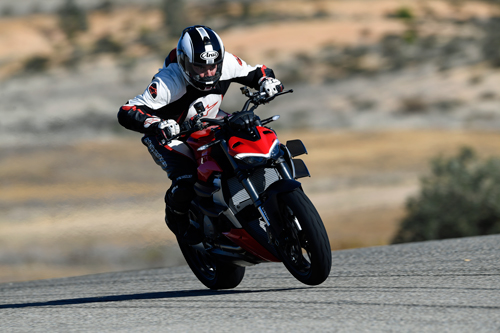
The day begins with a trio of morning sessions at Monteblanco, which I had approached with a bit of trepidation, having been away from a racetrack for almost two years. My apprehension melted away the moment I let the clutch out. The Streetfighter provides confidence-inspiring feedback, with power that’s impressively strong — especially once the tach needle sweeps past 6,000 rpm — but without being overwhelming. Of course, the bike’s electronics help in this respect, as it is equipped with lean-sensing traction control and ABS, wheelie control, and engine braking control, all of which are adjustable, either by selecting one of the three ride modes — Sport, Road, Wet — or individually. You can also select a “slide by brake” function that allows for some rear wheel slip when applying the rear brake so you can slide into a corner a la dirt track. Ride mode selection and other electronic adjustments are made via a 4.3-inch TFT display, and the menus are easy to navigate, taking me only a few minutes to figure out.
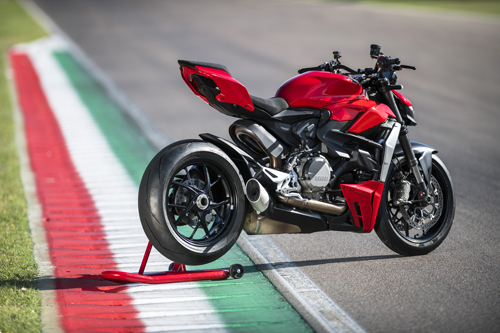
The bike is also equipped with a quick shifter for clutch-less gear changes up and down the six-speed gearbox. While I really appreciated this feature on the racetrack, I used it less frequently on the road as it increases shift lever effort on what is otherwise a slick-shifting gearbox.
Steering is light and neutral, yet rail-like in stability. The only drawback of the wide handlebar is a tendency to exaggerate unintended rider movement, creating a slight, rider-induced weave. This was only an issue in the early track sessions, before I limbered up and relaxed my grip on the handlebar. The engine is strong enough to loft the front wheel into the air in third gear, tough setting the wheelie control level limits just how high the wheel lifts. You can also turn it off if you’re an expert rider, or if looping a bike is on your bucket list.
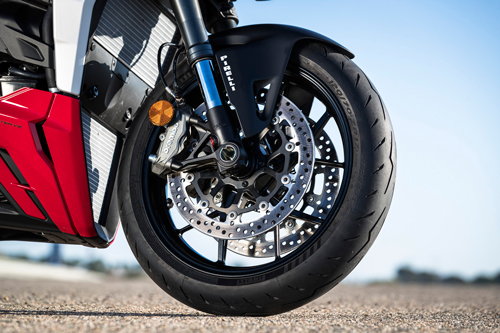
On the road
The Streetfighter V2 proved as worthy on the road as it did on the racetrack. The seat is wide, flat and comfy, though the footpegs are a bit high for a six-footer like me. The sinuous roads had me constantly pushing left and right on the grips, as the bike threaded the relentless barrage of esses. It transitioned through turns effortlessly, leaning confidently and maintaining a solid line through a curve, while responding to any mid-turn adjustments without drama. The endless succession of bends made me begin to yearn for a few straight bits just to catch my breath, or at least to give me the time to take in some of the luscious scenery flowing by.
The suspension worked very well here, though it must be noted that the roads in southern Spain are remarkably smooth. They were, in fact, smoother than at the racetrack. This was ultimately rewarding, but not so good for assessing how Canada-friendly the firm suspension might be. I backed off the compression damping to near minimum nonetheless to prepare for any big bumps, and to see if the bike would maintain its composure, which it did. I do suspect that the suspension will be mostly fine for our bumpy tarmac, save for some harshness on bigger bumps, a couple of which did I manage to find and ride over.
The Ducati Streetfighter V2 proved to be the ideal accomplice for the day. Something almost magical happens when you take a supersport machine like the Panigale V2, and strip it of bodywork: You get a narrow, nimble motorcycle with the performance of a supersport, but with a more accommodating, upright riding position. An added bonus is a wider handlebar in place of low clip-ons that makes it easier to manoeuvre on twisty roads or while threading daily traffic in town. As a double bonus, it costs $600 less than the Panigale V2, starting at $18,995, all the while sharing all of the same running gear and electronics. And unless you take your horsepower intravenously, it is a much more manageable package for everyday use than the Streetfighter V4, boasting the almost identical, bold styling — and you’ll pocket a whopping $5,700, to boot.
2022 Ducati Streetfighter V2
Price: $18,995.00
Engine: 955 cc, 90°, liquid-cooled V-twin
Power/torque: 153 hp/74.8 lb-ft
Weight: 200 kg (wet)
Competitors: BMW S1000R, Honda CB1000R, Kawasaki Z900, MV Agusta Brutale RR, Yamaha MT-09
Links: Ducati Canada



